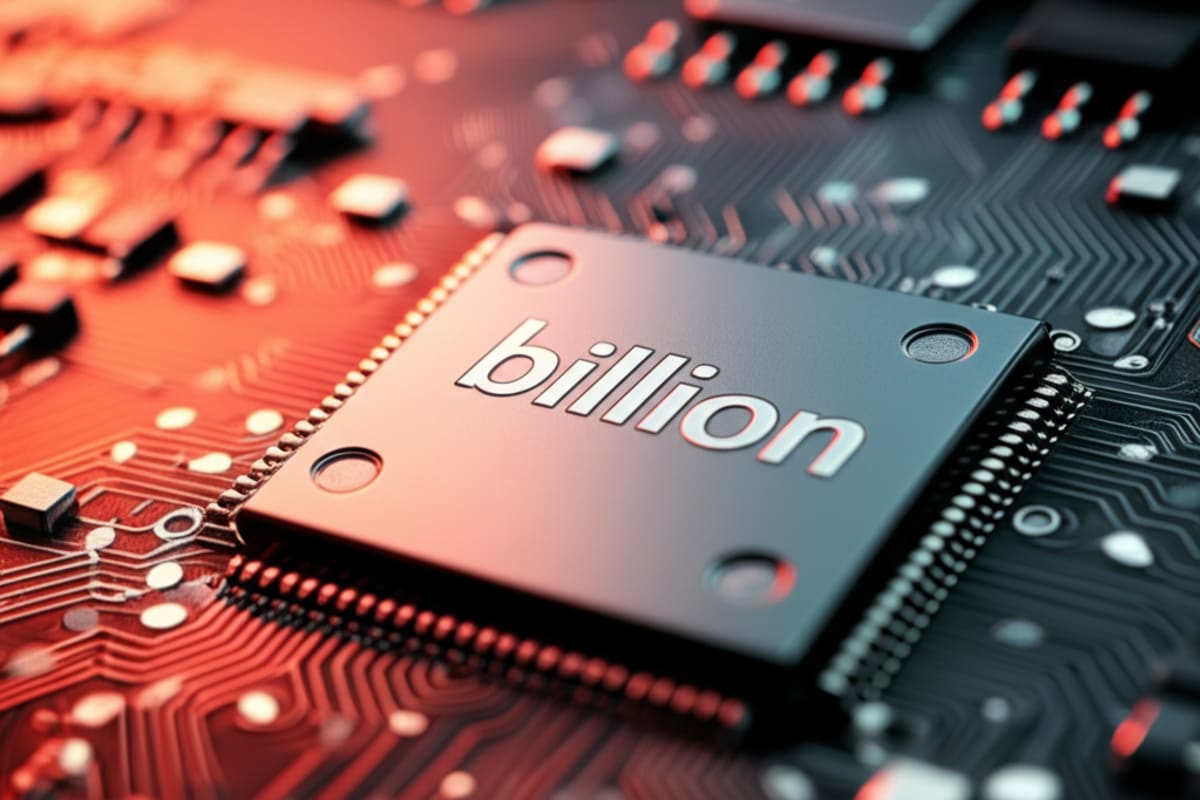Microsoft's AI Gamble: Billions Poured Into Data Centers Amid Soaring Costs

Hold on to your hats, folks, because it seems even tech giants like Microsoft aren't immune to a bit of sticker shock.
Background
Just this past Wednesday, the Redmond behemoth dropped its first-quarter financial report, and while the headline numbers were undoubtedly large, one figure in particular truly caught Wall Street off guard: a steeper-than-expected climb in capital expenditures
We’re talking about a whopping $34. 9 billion splashed out on things like data centers and leases, a significant leap from the $24 billion reported in the preceding quarter.
That's a staggering jump of over $10 billion in just three months. Why this sudden, colossal spending spree.
The answer, as you might’ve guessed, is a two-letter acronym that’s been dominating headlines and boardrooms alike: AI. Microsoft isn’t shy about it.
Chief Executive Officer Satya Nadella himself articulated the company's strategy, stating, and I quote: "We continue to increase our investments in AI across both capital and talent to meet the massive opportunity ahead
" It's a bold declaration, painting a vivid picture of a company absolutely committed to seizing the burgeoning artificial intelligence market
But commitment, as investors are quickly realizing, doesn't come cheap.
This isn't just about incremental growth; it's a fundamental reshaping of their operational backbone, driven by an intense global AI arms race
The AI Arms Race: Building the Digital BrainsThink of it this way: to power the AI revolution, you don't just need clever software; you need a colossal amount of physical infrastructure
We're not merely talking about elegant algorithms; we’re discussing sprawling, physical data centers packed to the brim with specialized processors – GPUs, anyone
– advanced cooling systems that consume power like a small city, and incredibly complex network architecture designed to ensure lightning-fast data transfer
Each new AI model, each new feature in Copilot or Azure AI services, demands more raw computational muscle
And that muscle, quite simply, needs a home. This isn't just about keeping pace; it's an intense global AI arms race.
Competitors like Amazon Web Services (AWS) and Google Cloud are also throwing immense resources into their own AI-optimized infrastructure.
Microsoft, with its deep integration of AI into its Windows, Office, and Azure offerings, feels it simply can't afford to be left behind
The promise of AI-driven efficiency and innovation across industries is undeniably immense, but so is the upfront cost of laying that foundation.
This substantial spending, however, has already raised investor anxieties about the high costs and whether the corresponding revenue gains will quickly justify such immense upfront investments
But here’s the rub: While Nadella speaks confidently of a "massive opportunity," investors are looking at the immediate bottom line.
The expectation was sky-high for Microsoft, especially given its early lead in the generative AI space and its pivotal partnership with OpenAI
Yet, when the numbers landed, that eye-watering capital expenditure figure fueled anxieties.
Wall Street analysts and fund managers are now grappling with a fundamental question: Is this massive spending sustainable, and will the revenue gains from AI truly justify such immense upfront costs in the short to medium term
Or is Microsoft – and indeed, the entire tech sector – entering a new phase where growth requires simply unprecedented levels of capital deployment.
This isn't just a corporate finance story; it's a bellwether for the future of technological investment
What's Driving the Spend.
It’s a multifaceted beast, with several key factors contributing to this unprecedented capital outlay:Relentless Demand for Cutting-Edge HardwareFirst and foremost, there's the relentless demand for cutting-edge hardware
Graphics processing units (GPUs), particularly those from Nvidia, are effectively the gold standard for AI model training and inference.
These aren't cheap, and the global supply chain, while gradually improving, remains tightly controlled and highly competitive
Microsoft isn't just buying them off the shelf; they're also likely investing heavily in custom silicon development.
This strategic move aims for greater efficiency, performance optimization, and independence from external suppliers – another incredibly costly, yet crucial, endeavor in the long run
The Sheer Scale of InfrastructureThen there's the sheer scale of the infrastructure required.
It involves securing vast tracts of land, ensuring access to reliable and massive power grids (often requiring renewable energy solutions, which add another layer of cost and complexity), and outfitting these immense facilities with advanced cooling solutions, robust security systems, and high-capacity fiber optic connections to ensure global reach and minimal latency
Each new facility is a miniature ecosystem designed to handle staggering computational loads
Attracting Top-Tier TalentFinally, the "talent" aspect Nadella mentioned in his statement can't be understated. The world’s top AI researchers, engineers, and data scientists are in incredibly high demand, making them one of the most sought-after demographics in the global job market.
Attracting and retaining them requires not only competitive salaries and comprehensive benefits but also providing cutting-edge resources, a stimulating work environment, and a compelling vision for the future of AI
These human capital investments, while not always directly captured in capital expenditure, significantly add to operational costs and are absolutely critical for innovation
The Southeast Asian Connection: A Region on the CuspNow, you might be thinking, what does Microsoft's massive spend in global data centers mean for us, particularly here in Southeast Asia
Well, quite a lot, actually
The region is in the midst of an accelerating digital transformation boom, positioning itself as a crucial hub for technological innovation.
Countries like Singapore, Indonesia, Malaysia, Vietnam, and Thailand are rapidly adopting cloud services, expanding e-commerce, and increasingly integrating AI-driven solutions across a diverse array of sectors – from smart cities initiatives and advanced logistics to transforming healthcare and modernizing finance
This burgeoning digital growth fuels an intense local demand for powerful, low-latency data centers. Hyperscalers like Microsoft, Amazon, and Google are keenly aware of this strategic importance.
Microsoft’s continued, aggressive investment in global AI infrastructure will inevitably trickle down, or rather, flow directly into, strategic regions like ours
We are likely to see sustained expansion of Azure regions and related infrastructure within Southeast Asia, bringing these powerful, AI-accelerated capabilities closer to local businesses, governments, and consumers
What does that mean for you and the region.
For local businesses, it translates into potentially faster, more reliable, and more affordable access to sophisticated AI tools and cloud services, significantly lowering the need for massive on-premise hardware investments
For startups and innovators, it democratizes access to powerful computational resources, effectively lowering the barrier to entry for developing AI-powered applications that can address local challenges and capture new market opportunities
For consumers, it could translate into more intelligent and personalized services, from enhanced retail experiences to more efficient public services, though the critical implications for data privacy and ethical AI deployment always warrant careful consideration and robust regulatory frameworks
However, there are significant challenges and opportunities too
This escalating demand for data centers inherently puts immense pressure on local power grids, underscoring an urgent need for sustainable and renewable energy solutions across the region
It also significantly highlights the growing demand for a highly skilled workforce – not just AI developers and machine learning specialists, but also data center technicians, cybersecurity experts, and cloud architects
This massive global investment by Microsoft isn't just a corporate balance sheet item; it’s a powerful bellwether for the technological future, and Southeast Asia is very much an integral, dynamic part of that future, poised to both contribute to and benefit from these global advancements
The Road Ahead: High Hopes, Higher StakesSo, where does this leave us and the broader tech landscape
Bloomberg Intelligence Senior Technology Analyst Anurag Rana is set to dive deeper into these very questions, sharing his nuanced insights on Bloomberg Businessweek Daily with Carol Massar and Tim Stenovec
He'll undoubtedly be probing whether this unprecedented spending is a shrewd, necessary long-term play for market dominance in the AI era, or if it risks weighing down near-term profitability and eroding crucial investor confidence during a period of economic uncertainty
In essence, Microsoft is betting the farm, or at least a significant chunk of it, on AI.
Nadella sees a "massive opportunity," and he's not wrong – the potential of artificial intelligence to fundamentally reshape industries, economies, and daily life is undeniable
But as the first-quarter numbers clearly show, seizing that opportunity comes with an eye-watering price tag.
The question isn't if AI will change the world, but rather, who will successfully navigate the incredibly expensive and complex path to building its foundational infrastructure, and at what ultimate cost to their bottom line along the way
Investors, consumers, businesses, and governments globally will be watching very closely to see if Microsoft’s grand AI gamble, and indeed the broader tech sector's approach, truly pays off in the long run
The stakes couldn't be higher
